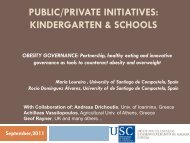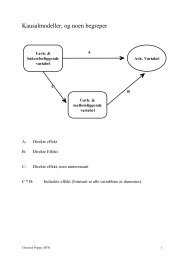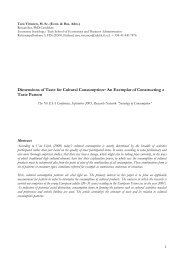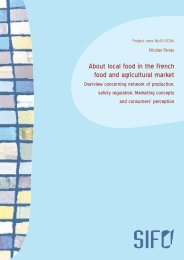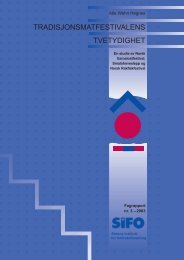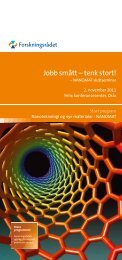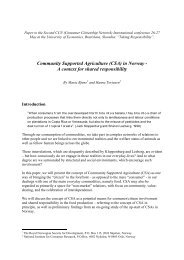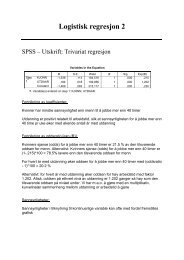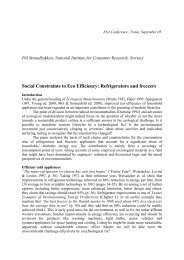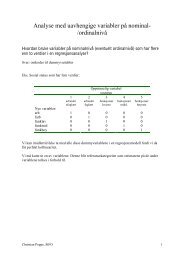an investigation of domestic laundry in europe - habits ... - SIFO
an investigation of domestic laundry in europe - habits ... - SIFO
an investigation of domestic laundry in europe - habits ... - SIFO
Create successful ePaper yourself
Turn your PDF publications into a flip-book with our unique Google optimized e-Paper software.
Hygiene effects <strong>of</strong> <strong>laundry</strong> processes <strong>in</strong> Europe 93<strong>laundry</strong> samples (see graph 4.17). A systematically higher colony count <strong>of</strong>about 2 log units was found with the Wascator. The difference is even greaterfor the dishcloth.H<strong>an</strong>dkerchief Diaper Sock Dishcloth Sterile samplelog CFU/4,7cm2 sample9876543210household wash<strong>in</strong>g mach<strong>in</strong>ew ascatorFigure 4-17 Total Plate count <strong>of</strong> the 15°C <strong>in</strong> Spa<strong>in</strong>To verify the results <strong>of</strong> the Sp<strong>an</strong>ish test, the 15°C <strong>an</strong>d 40°C tests were repeated.The test confirmed the earlier results but brought <strong>an</strong>other aspect tolight. The Sp<strong>an</strong>ish detergent generated a lot <strong>of</strong> foam dur<strong>in</strong>g the wash<strong>in</strong>g process.The Miele Novotronic W362 household wash<strong>in</strong>g mach<strong>in</strong>e automaticallyadds <strong>an</strong> extra r<strong>in</strong>se if extensive foam is detected. It is also known that the waterconsumption <strong>of</strong> the Wascator is less th<strong>an</strong> <strong>in</strong> a normal household wash<strong>in</strong>gmach<strong>in</strong>e. Water consumption could not only be <strong>an</strong> expl<strong>an</strong>ation for the differencesbetween the household wash<strong>in</strong>g mach<strong>in</strong>e <strong>an</strong>d the Wascator, but couldalso expla<strong>in</strong> the differences <strong>in</strong> the Sp<strong>an</strong>ish results from the other Europe<strong>an</strong>countries. Extra r<strong>in</strong>ses occurred only dur<strong>in</strong>g the Sp<strong>an</strong>ish test. To test this hypothesis,<strong>an</strong>other test was performed. A normal 40°C cotton programme witha compact detergent was compared to the same programme with <strong>an</strong> extrar<strong>in</strong>se. Graph 4.18 depicts the most <strong>in</strong>terest<strong>in</strong>g f<strong>in</strong>d<strong>in</strong>gs. The results show that<strong>an</strong> extra r<strong>in</strong>se improves the hygienic quality by more th<strong>an</strong> 1 log unit. Althoughthe differences between the Sp<strong>an</strong>ish results <strong>an</strong>d the results <strong>in</strong> other Europe<strong>an</strong>countries are greater th<strong>an</strong> 1 log unit, it could very well be one <strong>of</strong> the possibleexpl<strong>an</strong>ations for the deviat<strong>in</strong>g results. At this time other expl<strong>an</strong>ations were notfound.



